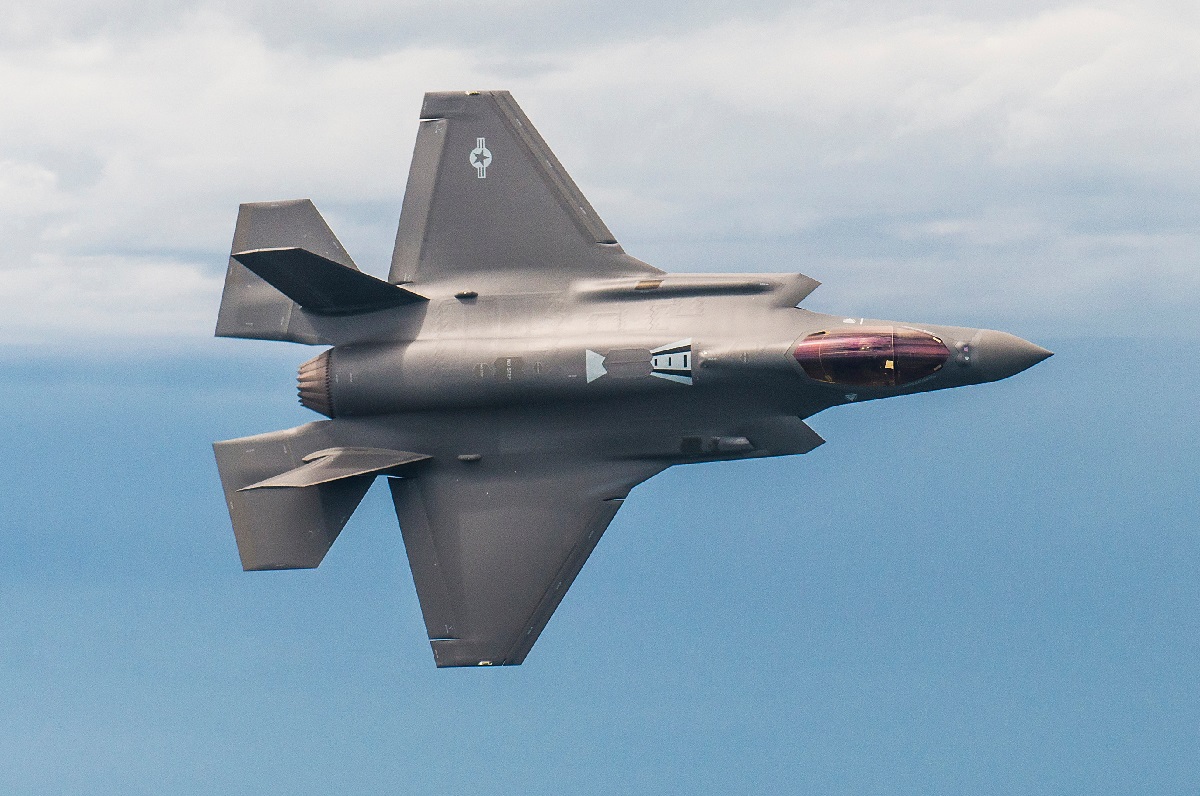Lockheed Martin’s F-35 Joint Strike Fighter is widely touted as the most advanced fighter in the world for good reason. Like all fifth-generation fighters, the F-35 was designed with stealth in mind, but it’s not just how tough the F-35 is to spot on radar that makes it so special. In fact, the F-35’s suite of systems and capabilities actually makes other, less advanced fighters more effective in the fight just by flying in the neighborhood, which has led many pilots to call the F-35 a “quarterback in the sky.”
Here are some interesting things you may not have known about America’s most expensive, and capable, fighter program.
The F-35’s Augmented Reality Display gives pilots a serious edge
In most fourth generation fighter jets (like the F-15, F-16, and F/A-18), the pilot’s attention is split between multiple monitors and the real world around them, but that isn’t the case in the F-35 thanks to a combination of expensive head gear, a heads up display, and the aircraft’s powerful on-board computers. Instead of showing different data feeds on different monitors, all sensor data accumulated by the F-35 is fused into a single augmented reality view displayed on the pilot’s helmet and one large screen.
As the pilot looks around, the pertinent data moves with his or her line of sight, even highlighting friendly and enemy forces and providing important information about positioning and rate of travel. Thanks to a suite of on-board cameras, the pilot can even switch to a full augmented reality view in low-light conditions that allows him or her to look through the aircraft at targets beneath or behind the fighter.
This streamlined perspective of the battlespace can then be transmitted to other aircraft in the area that lack the F-35’s data fusion capabilities, which gives the pilots of older fighters far greater situational awareness than their dated systems could provide.
The F-35 can destroy targets without ever firing a shot
One significant challenge facing F-35 pilots in the fight is the aircraft’s limited ability to carry ordnance. While retaining a stealth profile, the F-35 can only carry a measly four missiles in its internal weapons bays–far fewer than can be carried on external hard points in fourth generation jets. The F-35 gets around this limitation, however, thanks once again to its data fusion capabilities. Instead of wasting its relatively meager internal payload on ground targets, it can relay the targeting data to other assets including aircraft and even ground based missile and rocket platforms.
In October of 2018, the U.S. Marine Corps successfully hit a target with a M142 High Mobility Artillery Rocket System (HIMARS) using target data relayed by an F-35 flying high overhead. The ability to utilize weapons systems like the HIMARS in place of its internal payload greatly increases the platform’s combat effectiveness while allowing it to retain its stealthy profile.
In the future, as the F-15EX enters service, the Air Force even has plans to link the fighters so F-15s can fire missiles at targets spotted by their stealthy F-35 wingmen.
The F-35 can say screw stealth and go full “Beast Mode”
It’s true that the F-35 can only carry four weapons internally while maintaining its stealth profile, but when flying missions in uncontested airspace, stealth isn’t as valuable as firepower. That’s why Lockheed Martin came up with what they call the F-35’s “Beast Mode,” which most of the rest of us refer to as the “third day of war” loadout.
That third day is in reference to the idea that the first two days of war would involve stealthy F-35s engaging air defenses, so on the third day it can fly without any concerns about being detected by enemy radar. Without enemy radar to contend with, it doesn’t matter that the F-35’s stealthy shape is compromised by the additional weaponry.
With more than 2,000 F-35s expected to find their way into military service for the United States, this platform promises to become the future workhorse of just about all airborne operations. When that day arrives, the F-35’s “Beast Mode” loadout will likely see plenty of use in combat operations that are currently being handled by platforms that are dating out of service, like the A-10 Thunderbolt II and the F-16 Fighting Falcon.

